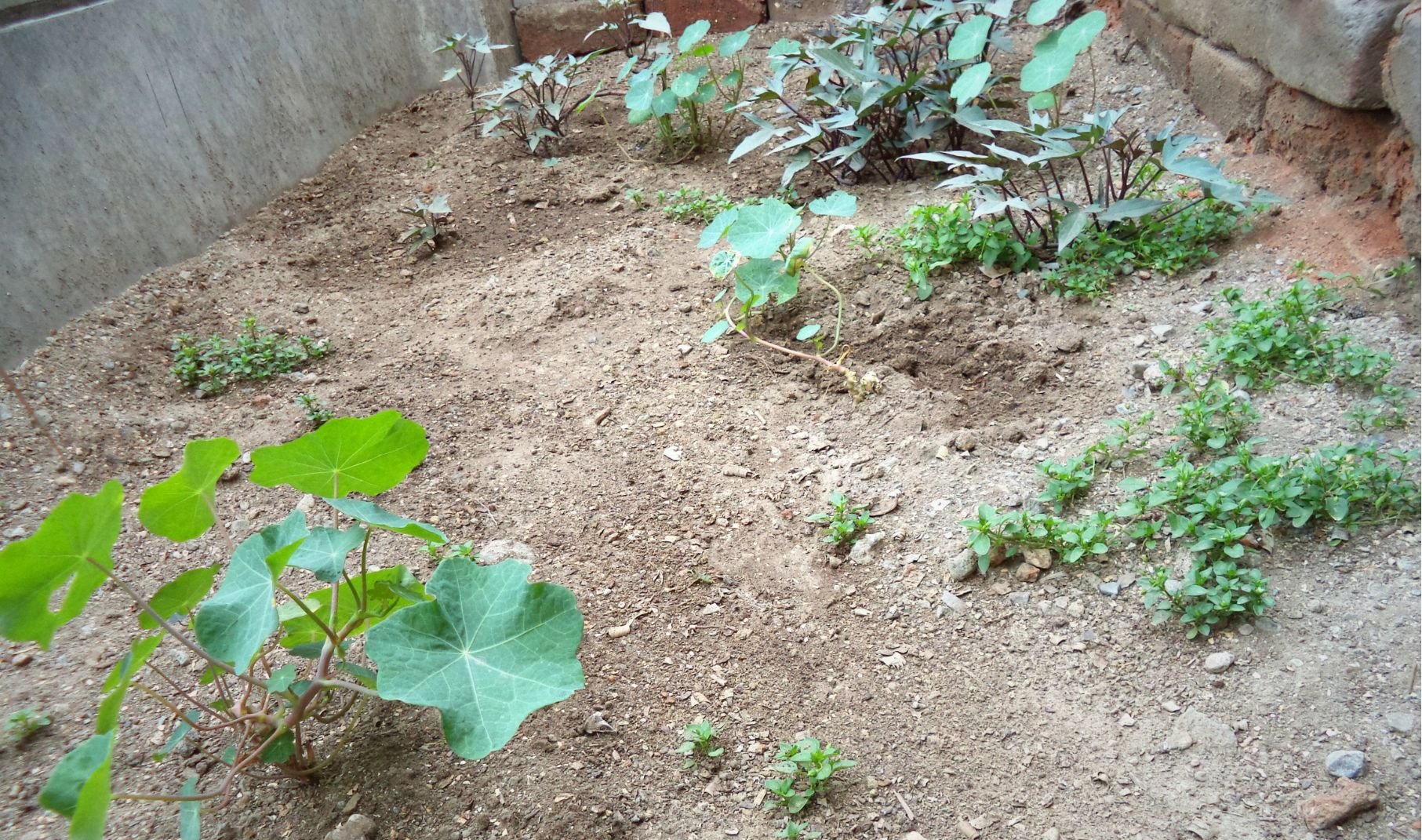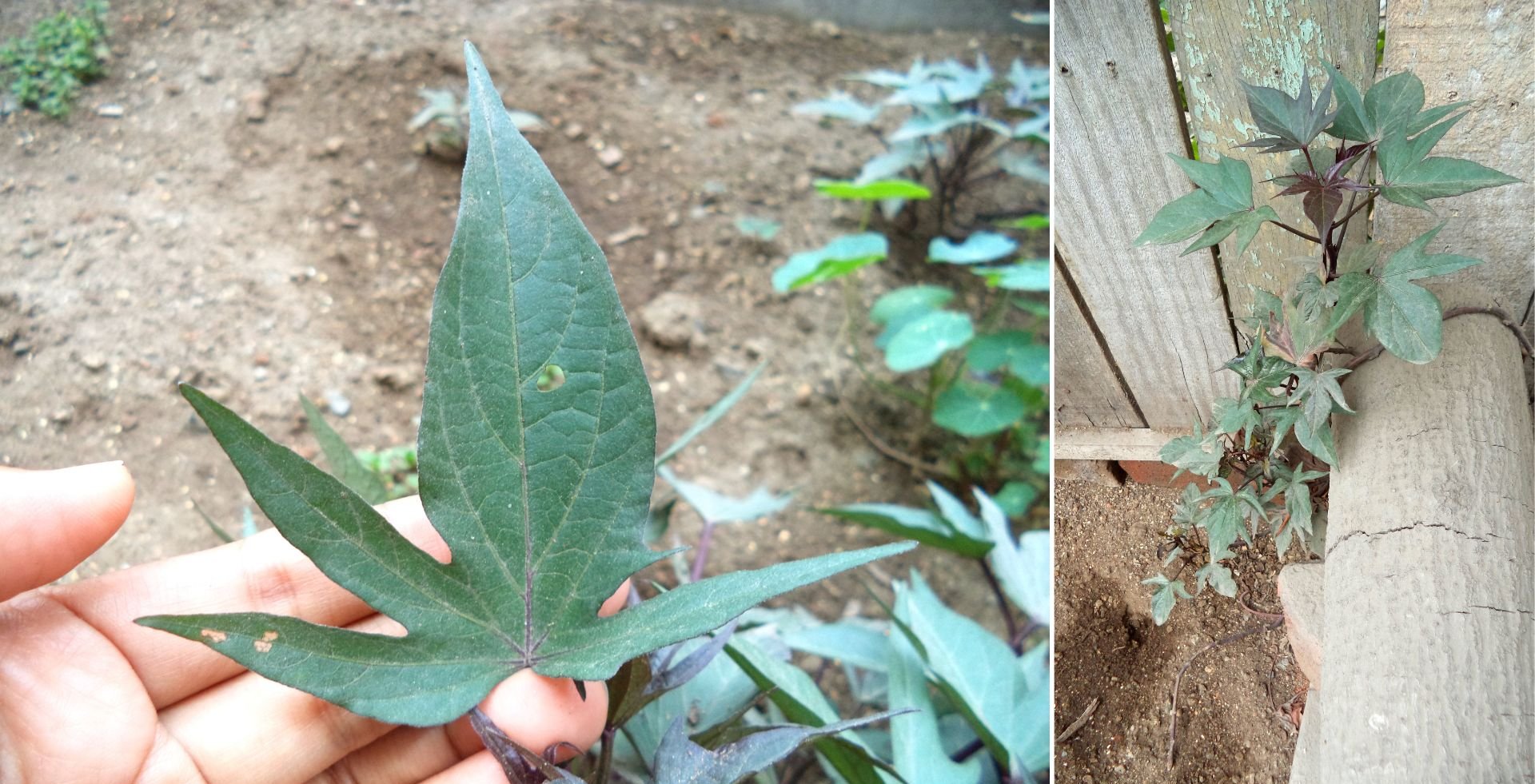
Hi, I hope you are feeling great!
One day a professor said that plants communicate with us and he also said that there are published studies about it. From there, I read the book he recommended ‘The Secret of Plants’ and said: Now it all makes sense.
In Andean culture, it is common for people to create connections with plants. Maybe because as children they fed on their fruits, played with the branches of the trees, or because they remembered their grandparents or parents, who also grew the same plants.

In the middle of this year, I decided to recover our garden or vegetable garden at home. I say ‘reclaim’ because in addition to a clean-up and a thorough fertilisation, each member of the garden will have a utilitarian function and will no longer be planted just because there is space. This is why this garden will have a fodder function.



Lettuce of the Incas, Capuchina or Mastuerzo (Tropaeolum majus), is a plant consumed in Peru since pre hispanic times. I tested it in salads and it has a spiciness in the leaves and stem, the latter being more noticeable. If you love spicy, this would be an interesting option to incorporate it in your salads.
This is one of dad's favourite plants. Although he likes it more for its numerous flowers. He says it reminds him of the Mashua (Tropaeolum tuberosum), a typical Andean food. The Inca lettuce, one of the few plants left from the previous garden, is present because of its utility as a fodder plant. This means that I will prevent it from flowering (by cutting it back) so that I only have green foliage. The guinea pigs and rabbits eat it, but it is the guinea pigs' favourite.

On the other way, the sweet potato is a fodder plant par excellence. There are dual purpose varieties (root stock and forage) and forage-only varieties. This variety is dual purpose, but it has to adapt first (because the soil is recovering) and this season it will be used as a fodder plant. We are already in spring where there are more hours of sunshine and this plant is hot.
I say it is very good as fodder because according to studies, one of the properties of sweet potato is to stimulate lactation. When my guinea pigs were lactating, I harvested these leaves and gave them to them as food (to ensure the nutrition of the babies). This can also be applied to women when they are breastfeeding...here it would be to consume the cooked sweet potato.

In addition to Inca lettuce, another gift from Dad is scented clove (here I tell you a bit more about this plant). Dad planted it thinking of one of his old favourite desserts ‘rice with milk’. Now it has many more uses and is a key member of the vegetable garden.
This connection we have with the plants demonstrates that they feel happy when we take care of them (pruning, fertilising, watering, washing, pest control and harvesting), and even more so when they repay us by providing us with their crops ( food parts) either for the animals or for our own food... they feel useful and in company.
... See you later!.

En español
¡Hola, esto es Waralwa!
Un día un profesor dijo que las plantas se comunicaban con nosotros y también aseguró que hay estudios publicados sobre eso. Desde allí, leí el libro que nos recomendó "El secreto de las plantas" y dije: Ahora todo tiene sentido.
En la cultura Andina, es común que la gente cree vínculos con las plantas. Ya sea porque de niños se alimentaban con sus frutos, jugaban con las ramas de los árboles o por recordar a sus abuelos o padres, quienes también cultivaban las mismas plantas.

A mediados de este año, decidí recuperar nuestro jardín o huerto que tenemos en casa. Digo "recuperar" porque además de hacerle una limpieza de campo y un abonamiento de fondo, cada integrante del huerto tendrá una función utilitaria y ya no se sembrará solo porque hay espacio. Por eso, este huerto tendrá una función forrajera.



Lechuga de los Incas, Capuchina o Mastuerzo (Tropaeolum majus), es una planta consumida en Perú desde tiempos pre hispánicos. La probé en ensaladas y tiene un picor en hojas y tallo, en este último es más notorio. Si te encanta el picante, esta sería una opción interesante para incorporarla en tus ensaladas.
Esta es una de las plantas favoritas de papá. Aunque a él le agradan mas por sus numerosas flores. Dice que le recuerda a la Mashua (Tropaeolum tuberosum), alimento típico de los andes. La lechuga de los Incas, es de las pocas plantas que quedaron del huerto anterior, está presente por su utilidad como planta forrajera. Eso quiere decir que evitaré su floración (mediante el desbotonado) y así tener solo follaje verde. Los cuyes y conejos lo comen, eso sí, es su favorito de los cuyes.

Por otro lado, el Camote es una planta forrajera por excelencia. Hay variedades de doble propósito (raíz reservante y forrajera) y solo forrajeras. Esta variedad es de doble propósito, pero antes tiene que adaptarse (porque el suelo está en recuperación) y en esta campaña tendrá función forrajera. Justo ya estamos en Primavera donde hay más horas de sol y esta planta es de calor.
Digo que es muy buena como forraje porque según estudios, una de sus propiedades del camote es estimular la lactancia. Cuando mis cuyes estaban durante la lactancia, coseché estas hojas y se las dí como alimento (para asegurar la nutrición de las crías). Esto también puede aplicarse en mujeres cuando están en etapa de lactancia...Aquí sería consumir el camote sancochado.

Además de la lechuga de los Incas, otro regalo de papá es el clavo de olor (aquí les hablo algo más de esta planta). Papá lo sembró pensando en uno de sus antigüos postres favoritos "el arroz con leche". Ahora tiene muchas más utilidades siendo miembro clave en la huerta.
Esa conexión que tenemos con las plantas nos muestra que ellas se sienten alegres cuando las atendemos (poda, fertilización, riego, lavados, limpieza de plagas y cosecha), mas aún cuando nos lo retribuyen brindándonos sus cosechas (partes comestibles) ya sea para los animalitos o para nuestra alimentación...se sienten útiles y en compañía.
... Jikisiñkama!
... ¡Nos vemos!.
It is good that you recovered the Garden place again. It is good to become more productive and developed the place even if there is only a small space. Planting vegetables in a recycled empty plastic bottles is also good so that we can have lots of space. ☺️
Hi. I am making the most of the potential of the area we have at home. I did try the bottles, I hope to plant strawberries soon. Big hugs.